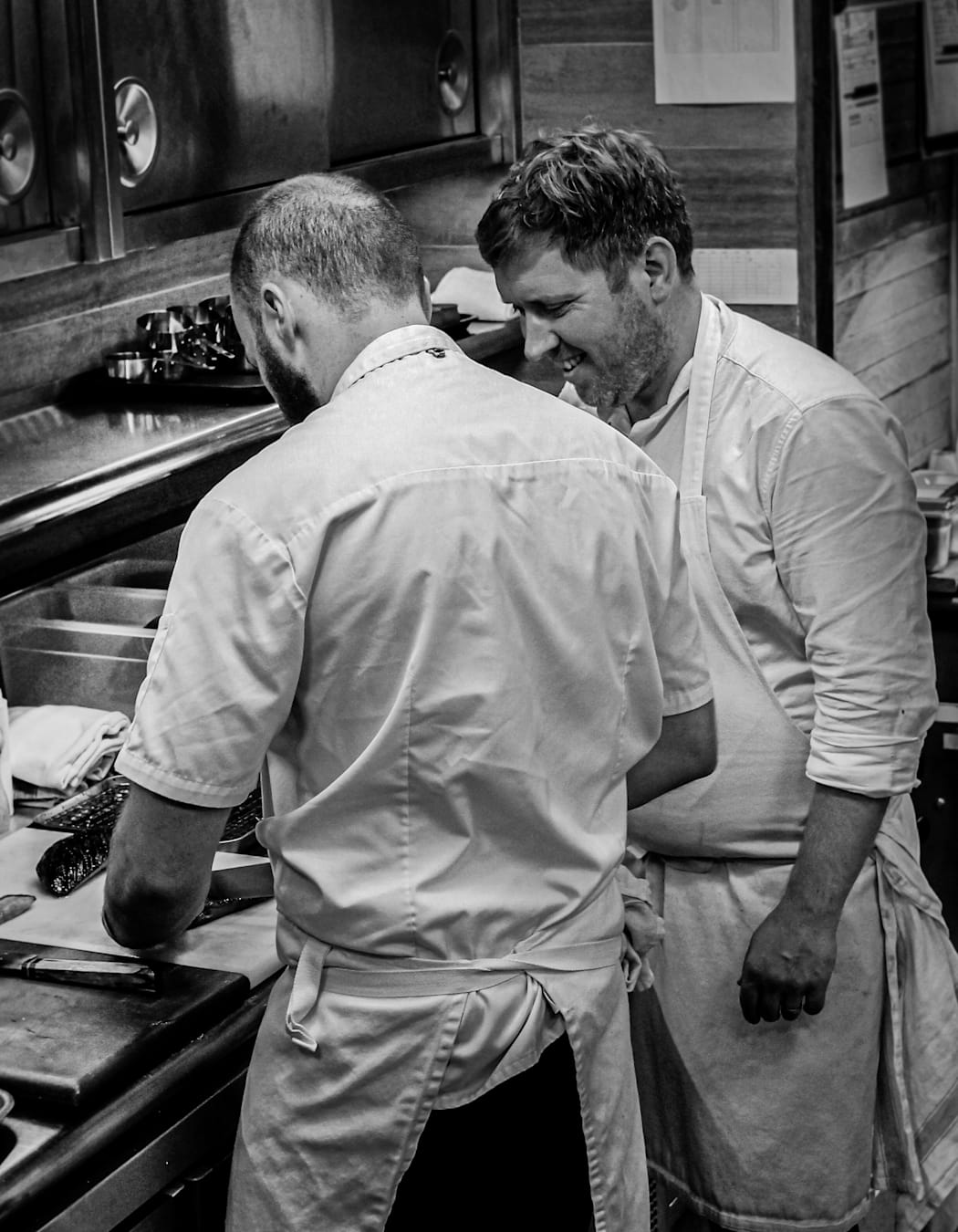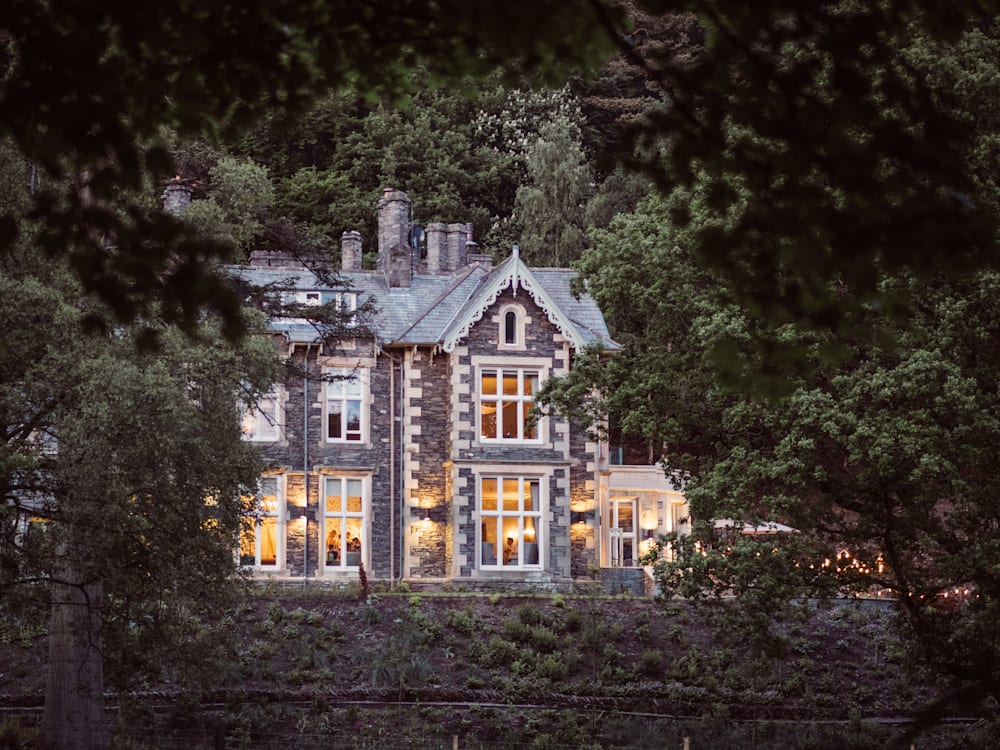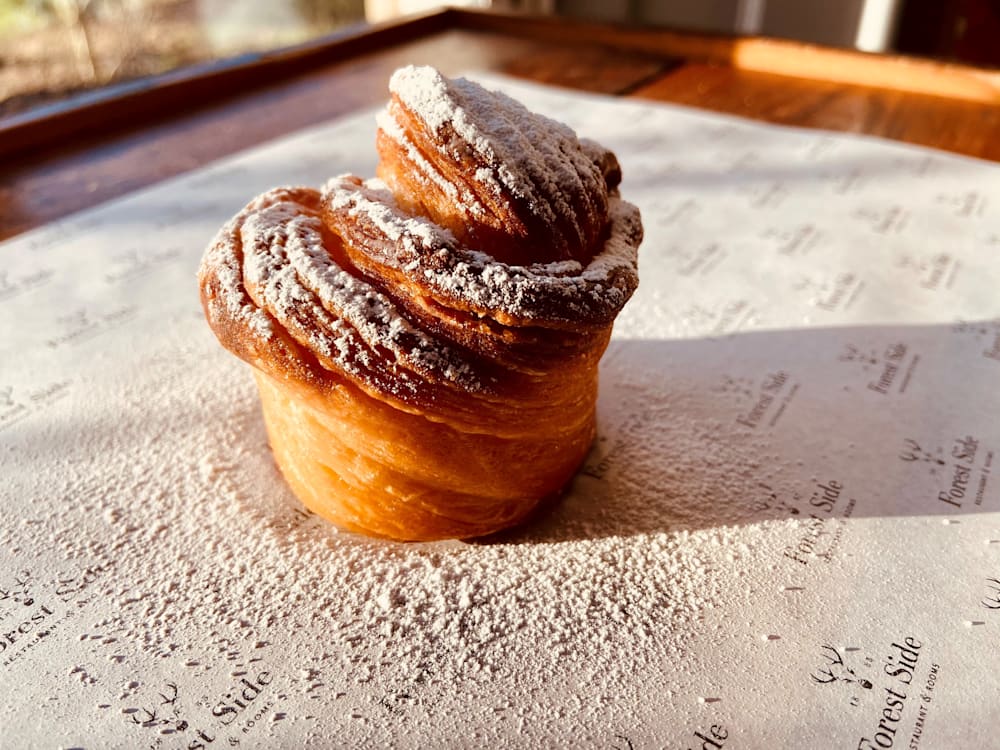Let us introduce you to the world’s most exciting hotel chefs as we guide you through the gourmet getaway spots we’re hungering for…
WHO’S IN THE KITCHEN?

Paul Leonard is head chef at gothic mansion Forest Side, a luxury Lake District hotel named after a line from a Wordsworth poem. And like the 19th-century poet, Leonard’s menus draw exquisite, often witty, inspiration from the landscape around him, while staying true to the varying ideologies of his previous posts at London’s Pétrus by Gordon Ramsay, Yorkshire’s Devonshire Arms and the Isle of Eriska hotel on Scotland’s West Coast.
WHAT’S COOKING?
The sights and smells of the Lake District are distilled into wonderfully imaginative dishes that celebrate the seasons, particularly game season. Expect deer, grouse, Herdwick mutton and lamb, monkfish, lobster and halibut, prepared with flavours foraged from the hotel grounds and beyond, including woodland fungi, salted quince, sweet cicely, smoked juniper or pickled allium flowers. This is a tour of Cumbria’s coast, fells and valleys that you can do seated at the dining table.
RECIPE FOR SUCCESS
At the age of 21, Paul moved from his native Yorkshire to cut his teeth at Pétrus by Gordon Ramsey in London. Various sous chef roles followed before a formative stint working with Andrew Fairlie in Gleneagles. His first head chef position was also in Scotland, at the Isle of Eriska hotel, before he moved back to Yorkshire to helm the Devonshire Arms. Forest Side came calling in 2019, where along with its one-Michelin-star status the hotel was recently awarded a Michelin key, a new award focusing exclusively on hotels.
You spent some of your formative years in London at Pétrus by Gordon Ramsay. What did you learn to do — and what not to do — while working there?
Working at Pétrus at that time was tough, especially given the fact it was my first experience in a Michelin-starred kitchen, let alone a two star. It gave me the mentality and discipline that I’ve kept throughout my career, so I’m appreciative of that. Quite simply you learn never to cut corners, and to ensure your work is clean, tidy and disciplined. I also learned to be honest with myself and the team around me.
What was it like working at the Isle of Eriska hotel on the West Coast of Scotland, and how did it compare with your next role at the Devonshire Arms in Yorkshire?
I loved my time on Eriska and I’m thankful to the Buchanan-Smith family, especially Beppo, for giving me my first head chef opportunity. There was a very close connection to the suppliers up there, mainly due to the location and the fact we got most deliveries once a week. Rotation and planning was key. In comparison to the Devonshire Arms, Eriska was pretty small. The Dev was a beast and it was a lot to take on, looking after a much larger kitchen team, but the mindset I’d cultivated during my career helped. Both hotels were totally different and both hold a special place in my heart.
What drew you to working at Forest Side?
Everything. I dined here plenty of times before taking over and it’s a beautiful place run by beautiful people. I desperately want to achieve more and more here as I believe the owners and the team really deserve it. The area is incredible for me to bring up my family in, and the dining scene is the best in the UK.

How many diners at Forest Side are locals stopping for lunch or dinner compared to guests staying overnight?
At lunch we generally cater for locals and holidaymakers staying elsewhere, while dinner is mostly hotel guests. Visitors tend to stay one or two nights during their trip to the lakes, but for those staying longer we try to vary the menu.
It’s clear that you imbue your dishes with a lot of love, and sometimes even wry humour. Is this something you’re conscious of or does it happen naturally?
The love in the food is non-negotiable. If there’s no love then it’s not worth the effort, and that makes my food quite personal to myself. The humour comes from the fact we try not to take ourselves too seriously. Yes we are cooking at a high level but alongside the love we need to have fun.
Much has been made of your excellent use of local ingredients, alongside flavours from elsewhere in the UK. How much is sustainability part of the conversation in your kitchen, and what sort of sustainable decisions are you making day to day?
In this day and age we need to ask ourselves what more we can do at every opportunity to protect the future. We work closely with our farmers, growers and suppliers when planning menus to make sure we are being as conscious as possible in regards to sustainable practices. Planting in the garden and working on sustainable garden practices is an ongoing conversation. Things like eliminating single-use plastic, being sure to recycle, good food-waste management and the teaching of the younger team are daily topics in our briefings.
Your menus draw a lot from game season. What excites you about these periods, and how do you prepare for them?
I think my time in Scotland really instilled the love of the game season into me. I love the fact the produce is wild and natural and is something that’s been happening in our country for years. I believe you can use robust flavours in these dishes and the time of year allows you to put a little bit of body into them. Making game sauces is a love of mine and I love teaching the younger team about these. Also, animal butchery is a great tool to teach the team. We generally prepare by using the previous year’s dishes as a starting point and speaking with suppliers, seeing how the season is looking.
How would you describe the atmosphere you like to cultivate in your kitchens?
Firstly, it’s got to be welcoming. Fun but disciplined. We spend a lot of time together so we need to get on and all have a common goal.
Last year you welcomed a group of esteemed guest chefs to cook alongside you in the kitchen at Forest Side. What did you learn from that experience, and what was the highlight?
While the chefs we invited were at the very top of their game, they are also good friends of mine so it was like having your best mates around for dinner. We all swapped recipes and methods and really delved into the shared love of food. The highlight was watching the younger members of the team hold their own and network with some of the best chefs in the country.
If you could only name one, what would be the key factor that influenced you to become a chef?
After my first taste of a proper kitchen at Pétrus, I would say the discipline of a kitchen was something that got me hooked and it’s stayed that way.
What food trends can you see on the horizon?
Trends come and go and I tend to stick in my lane and not follow them. I do hope the horizon brings more security and support to our incredible industry as at the moment we are losing great restaurants on a daily basis. It’s heartbreaking.
ANSWERS À LA MINUTE
You can hop to three restaurants (or cafés or street-food carts…) in three different countries for breakfast, lunch and dinner — where are you going?
Breakfast in Italy — no restaurant, just at home eating cured meats, cheese, tomatoes and bread. Lunch in Yorkshire, for The Star Inn at Harome’s Sunday lunch, Dinner at The French Laundry in California.
Which dish instantly transports you home?
Cottage pie, my mum used to make one with sweet-potato mash and it was incredible.
If given the opportunity, how would you make airplane food more exciting?
I remember watching [Channel 4 documentary] Heston’s Mission Impossible on improving plane food. It was interesting to see how altitude changes the taste buds. I would keep it simple though and plan on something you don’t need to keep hot for hours.
You’ve snuck some minis onto the plane — what cocktail are you making?
I would go for a Negroni…then a good sleep.
Room service — what are you ordering?
Rib-eye steak and chips, Bearnaise sauce and a big glass of Bordeaux.
Which dish from your travels do you wish you’d created?
Andrew Fairlie’s smoked lobster, absolutely the best dish ever. A dish that shows huge respect to the produce but is elevated by the cooking process, creating something world class.
What’s your guilty-pleasure holiday treat?
Ice-cream, I adore it
What’s your favourite dish on the menu at Forest Side?
If I had to choose one right now it would be the deer main course. It’s got salted quince from the garden, bacon jam using local pig belly, celeriac from the garden and the most amazing autumn truffle sauce.
TIME TO SERVE

How to make Paul’s decadent dessert…
Cruffins
Ingredients
- 50g white sugar (and a sprinkling for rolling)
- 10g dried yeast
- 15g Maldon sea salt
- 510g plain flour
- 310g unsalted butter
- 330g whole milk (note: this is grams, not millilitres)
To make the dough
In a stand mixer fitted with a dough hook, combine the flour, sugar, yeast and salt and whisk. Heat the milk to 40°C and pour in, then mix until all of the flour is combined. Continue at medium speed for around six minutes until the dough is smooth and elastic. Put the dough in a bowl, cover with a kitchen towel, and let it rise for about an hour until it’s soft and slightly puffy. Leave this in the fridge overnight.
To make the butter block
Sprinkle parchment paper with some flour and lay the cold unsalted butter on top. If using a block, cut in two lengthwise and lay the halves side by side. Sprinkle a little flour over the butter, lay another sheet of parchment on top, and roll into a 20x20cm sheet using a rolling pin. Place in the fridge until the dough is ready.
To laminate the dough
On a floured surface, roll the now-risen dough into a 26x26cm square and lay the butter sheet on top, so it’s a diamond on top of the square. Pull the dough’s edges up and around the butter, pinching at the seams to seal. Use a rolling pin to gently tap up and down on the dough to spread out the butter and mould into a more rectangular shape. Roll the dough in one direction until you have a rectangle. Fold one-third of the end of the rectangle over the centre, then repeat with the other end so the dough is folded like a letter. Wrap well in clingfilm, then put in the refrigerator for about 30 minutes. Repeat the ‘letter’-folding process four times in 30-minute intervals until the dough is ready to shape.
To shape the cruffins
Cut the dough in half. Rather than shape like a croissant, roll each half into 20x40cm rectangles, keeping the edges as straight as possible and trimming to tidy. Cut these lengthwise into eight 2.5x40cm strips. Roll each into a spiral, wrapping the end over the top and then securing it underneath. Place each roll into a muffin tin, then place the tin in a plastic bag, tucking the ends under to protect the dough from drafts. Let the rolls rise for one-and-a-half to two hours, or until the dough is soft and puffy.
Bake at 200°C for eight minutes, then turn down to 170°C and bake for a further 20 minutes, until the edges are golden brown. Remove the cruffins from the oven and allow them to cool. Roll the warm cruffins in white sugar, then fill or top with whatever you wish [Paul recommends rhubarb and custard]. Eat the same day for best results.
Tastebuds tingling? We’ve more interviews with — and recipes from — some of the world’s top chefs, such as Maxime Raab and Peter Fridén…



